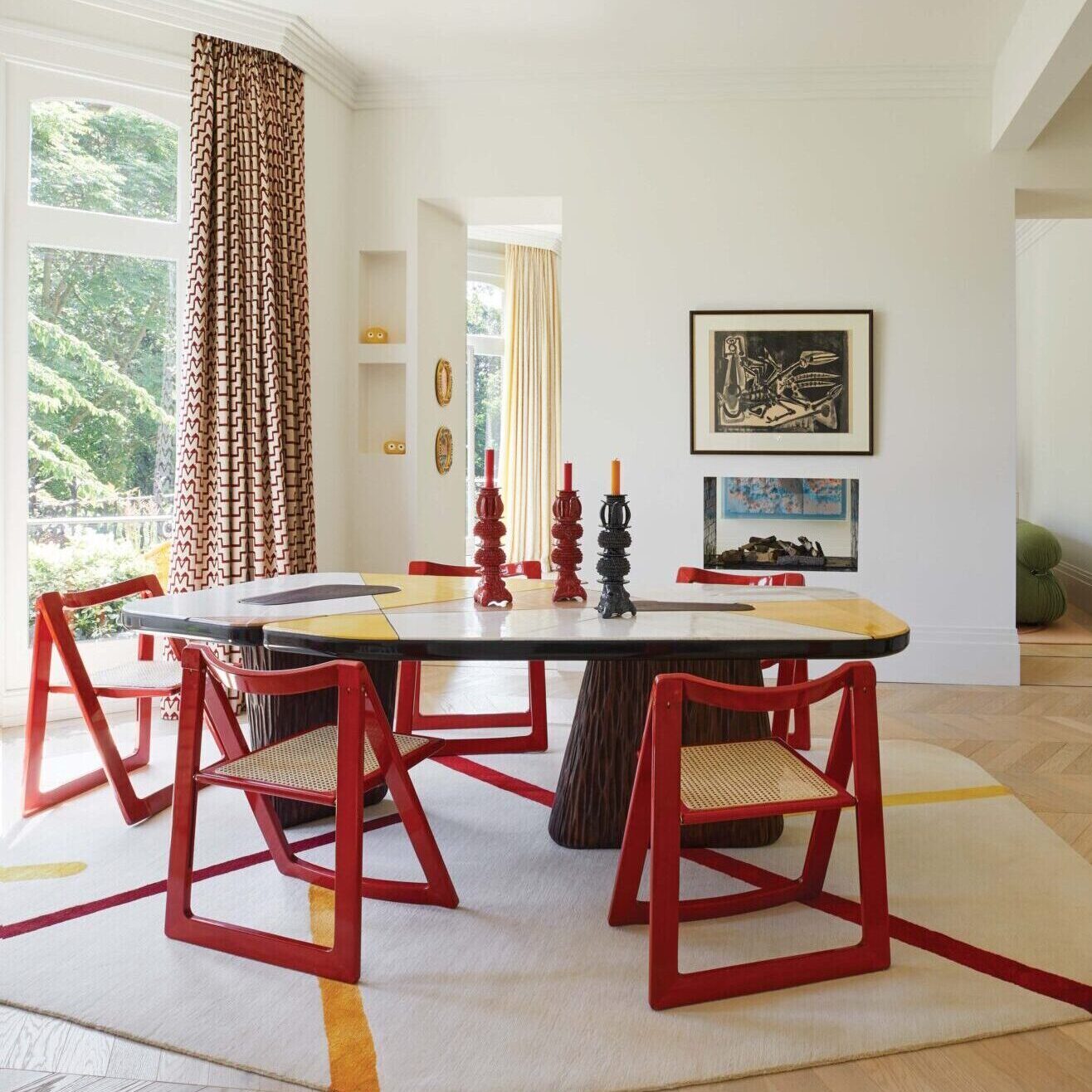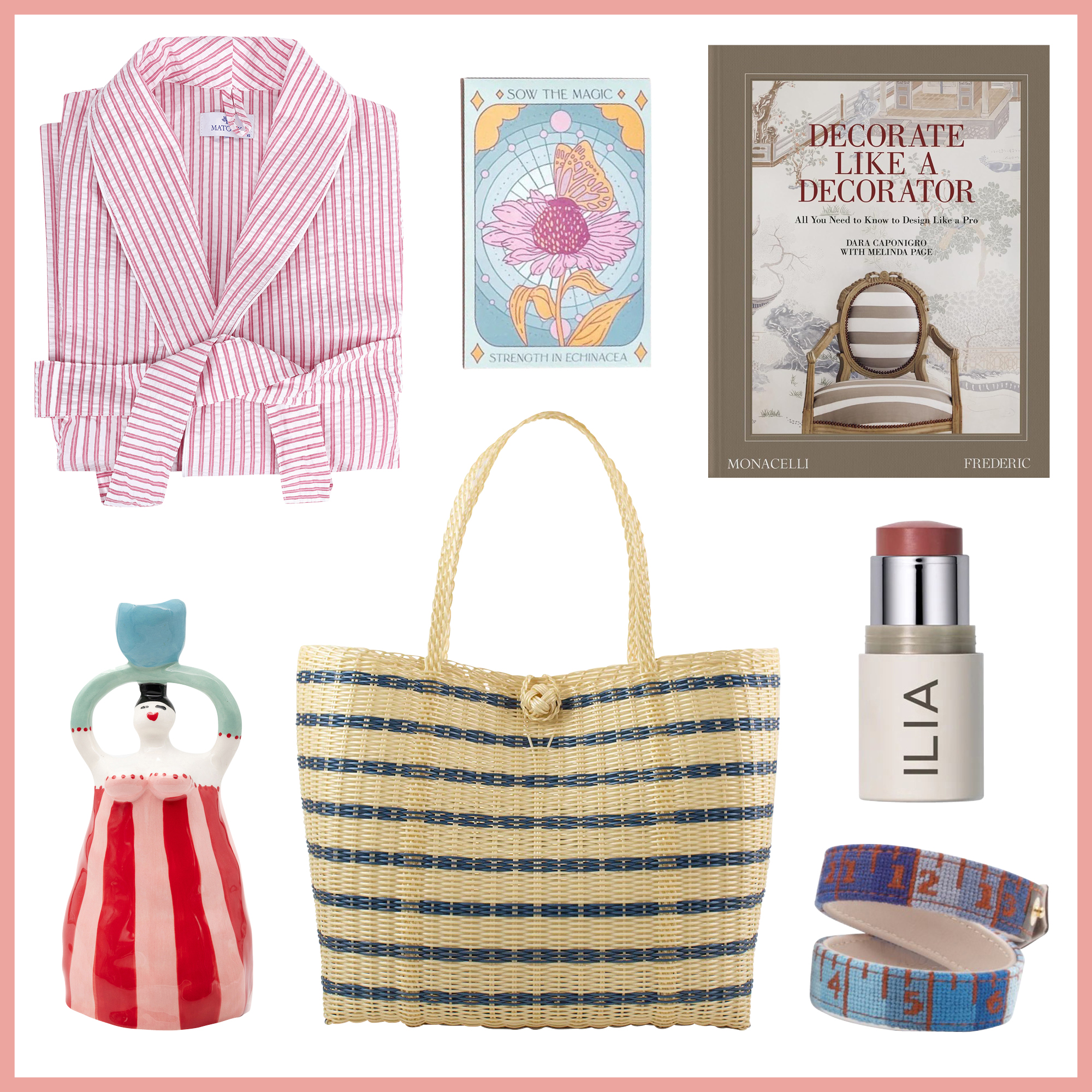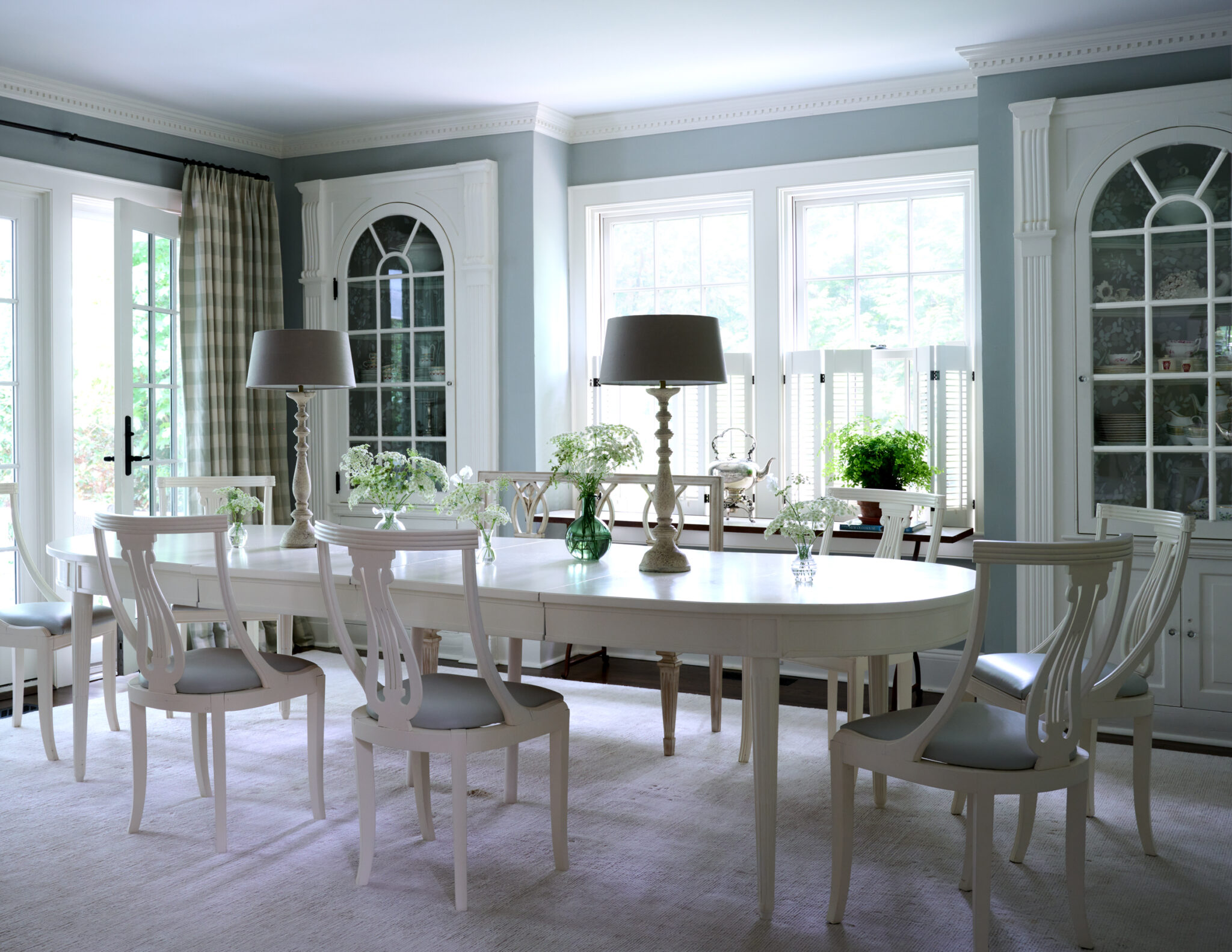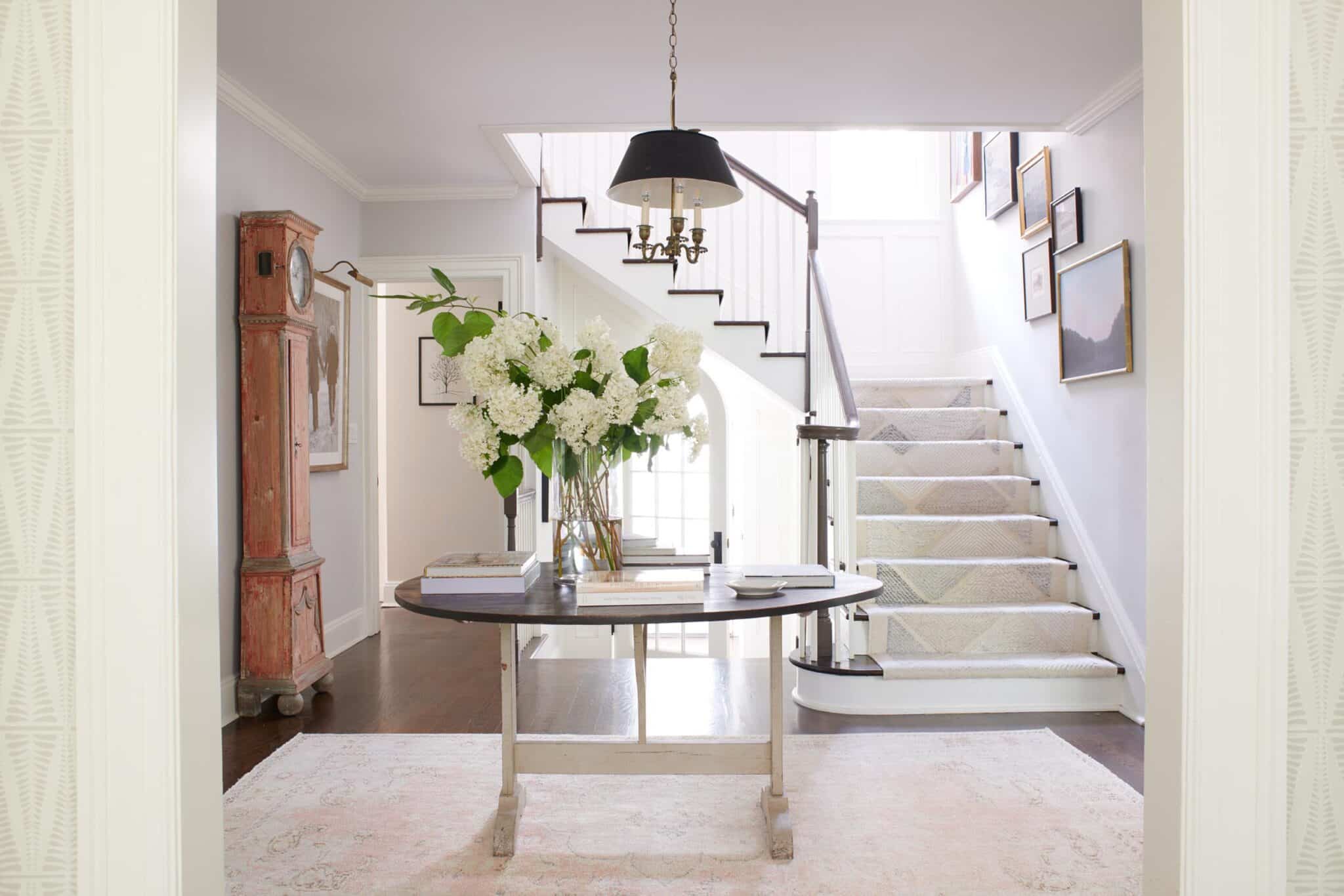Good things come to those who wait—just ask Clare Fleming Peters. At the age of 39, the lifelong Californian moved cross-country to New York to attend design school at Parsons, but quickly learned that fate had so much more in store for her.
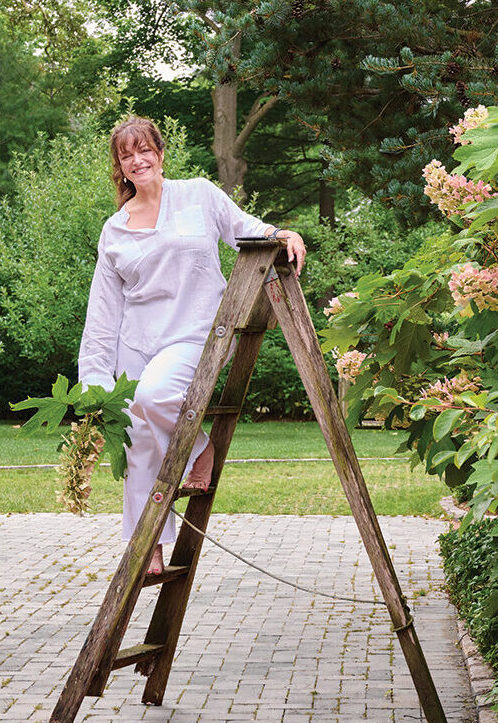
“You could say I’m somewhat of a late bloomer,” she laughs. “I was in my 40s when I fell in love with interior design, my husband Paul, and his charming town of Roslyn Estates. So, when I relocated from my Gramercy Park apartment to his family home in the country, I had no qualms about holding out for the perfect place where we could build our new life together. Even if the house hunt took a decade!”
That perfect place was a 1926 farmhouse sprawled across acres of mature gardens and groves along Old Northern Boulevard, part of George Washington’s “spy trail” in the late 1700s. Working with architect John Sandgren and Baldino Construction, Peters, who recently launched her eponymous firm Fleming Peters, honored the history of the land and the home’s architectural integrity while doubling its footprint and tailoring it to the lifestyle of her modern blended family of four.
-

After a three-year search, Peters finally found an antique French farm table large enough to seat 12 comfortably. The cushions on the Gustavian hostess chairs are made from a large remnant of Robert Kime’s Ibraham linen, unearthed at a tag sale in the basement of New York’s St. Ignatius Church.
William Waldron -
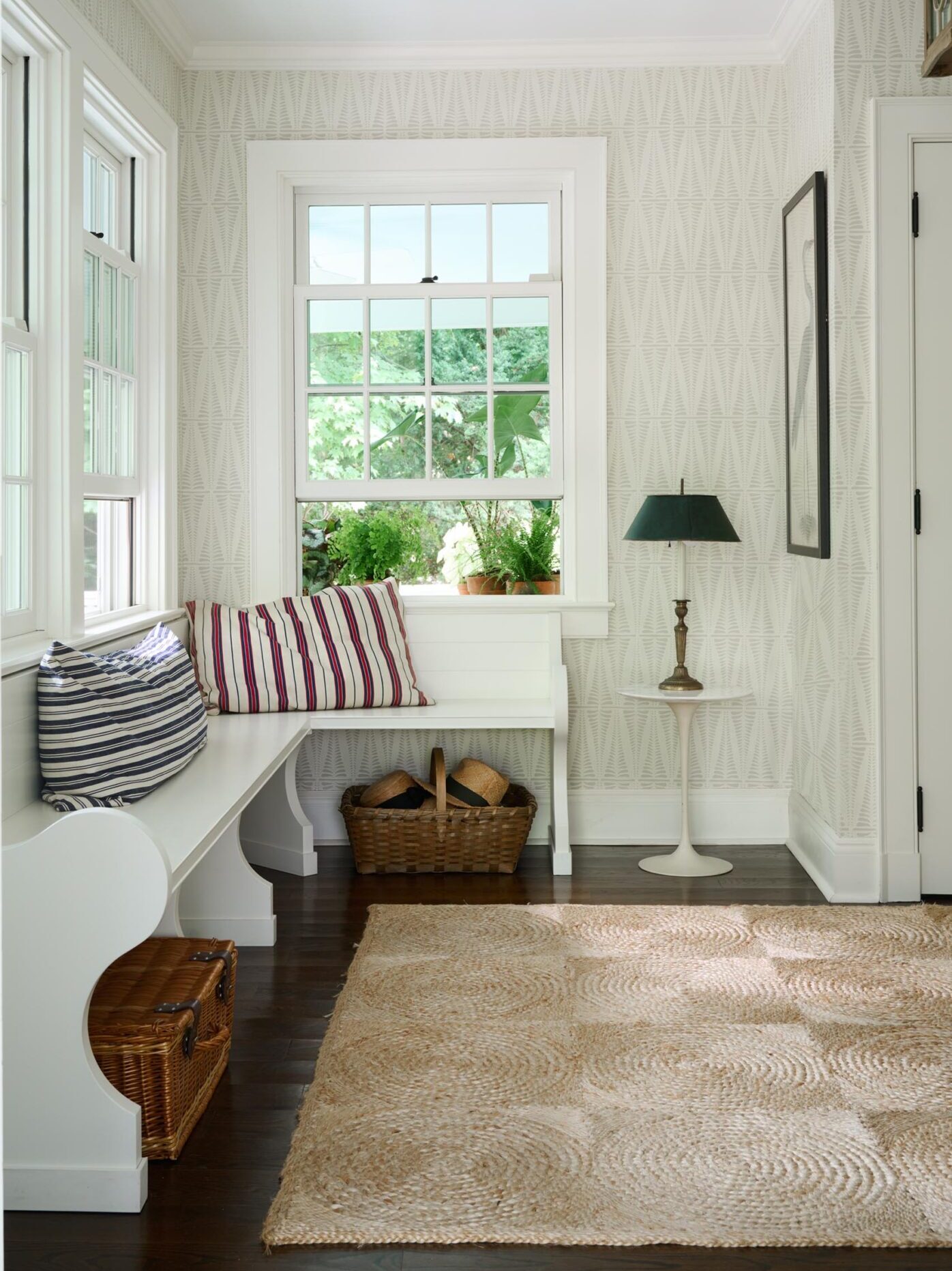
The mudroom is swaddled in Galbraith & Paul’s Fern wallpaper and houses a built-in corner bench inspired by one in a photo an old Swedish farmhouse. The vintage baskets stowed beneath it are from Young’s Farm in Brookville. The 1960s Saarinen table is topped with a vintage lamp sourced at Meg Braff’s shop in nearby Locust Valley.
William Waldron
Outside, the structure epitomizes the New England farmhouse tradition. Unfinished Hardie board siding conveys the classic appeal of white paint but with a hint of age and authenticity. In lieu of red, white, and blue, the iconic wraparound porch is appointed in cranberry, cream, and teal, expressing All-American style with a slightly European accent. Inside, Peters pulled from her West Coast roots to compose a cool palette of watery blues and greens, sandy whites, and warm, sunny neutrals. She also drew on her passion for all things English: antique oil paintings and engravings, silver and brass, and cozy natural textiles like alpaca, antique linen, and cotton ticking stripes. But, more than anything, the designer looked inward to find inspiration for the furnishings and decor through self-reflection. The result: comfortable spaces that celebrate all the things she holds most dear—art, history, nature, heritage and, most importantly, family.
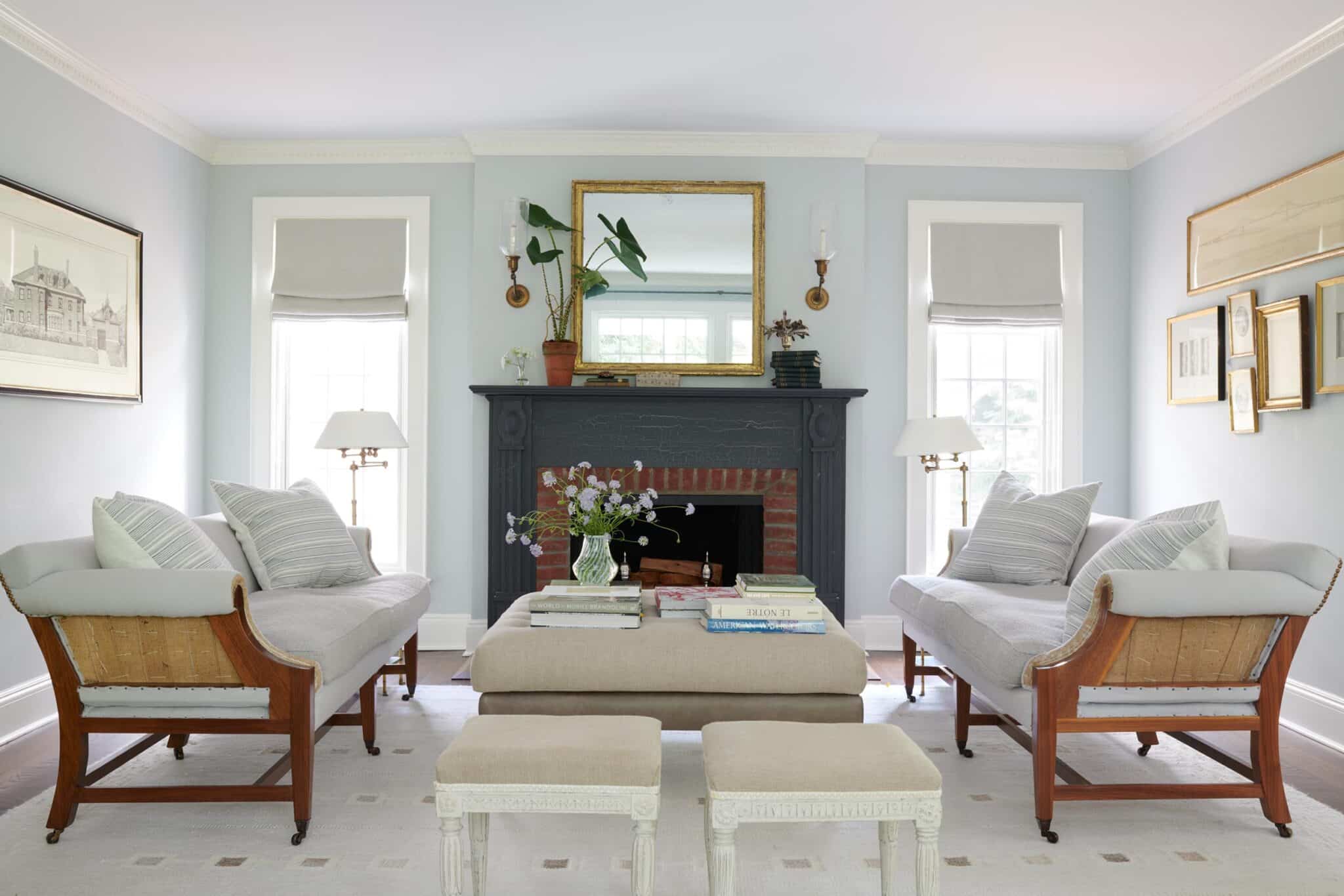
Painted Farrow & Ball’s Off-Black, the living room’s custom mantel was inspired by the fire surround at Robert Kime’s Irish cottage, Ardagh. Peters met the design legend in the fabric library at Bunny Williams, Inc. and cites him among her primary design influences. The French “guillotine” windows flanking the fireplace were formerly bookcases, which she removed to flood the room with natural light.
William Waldron-
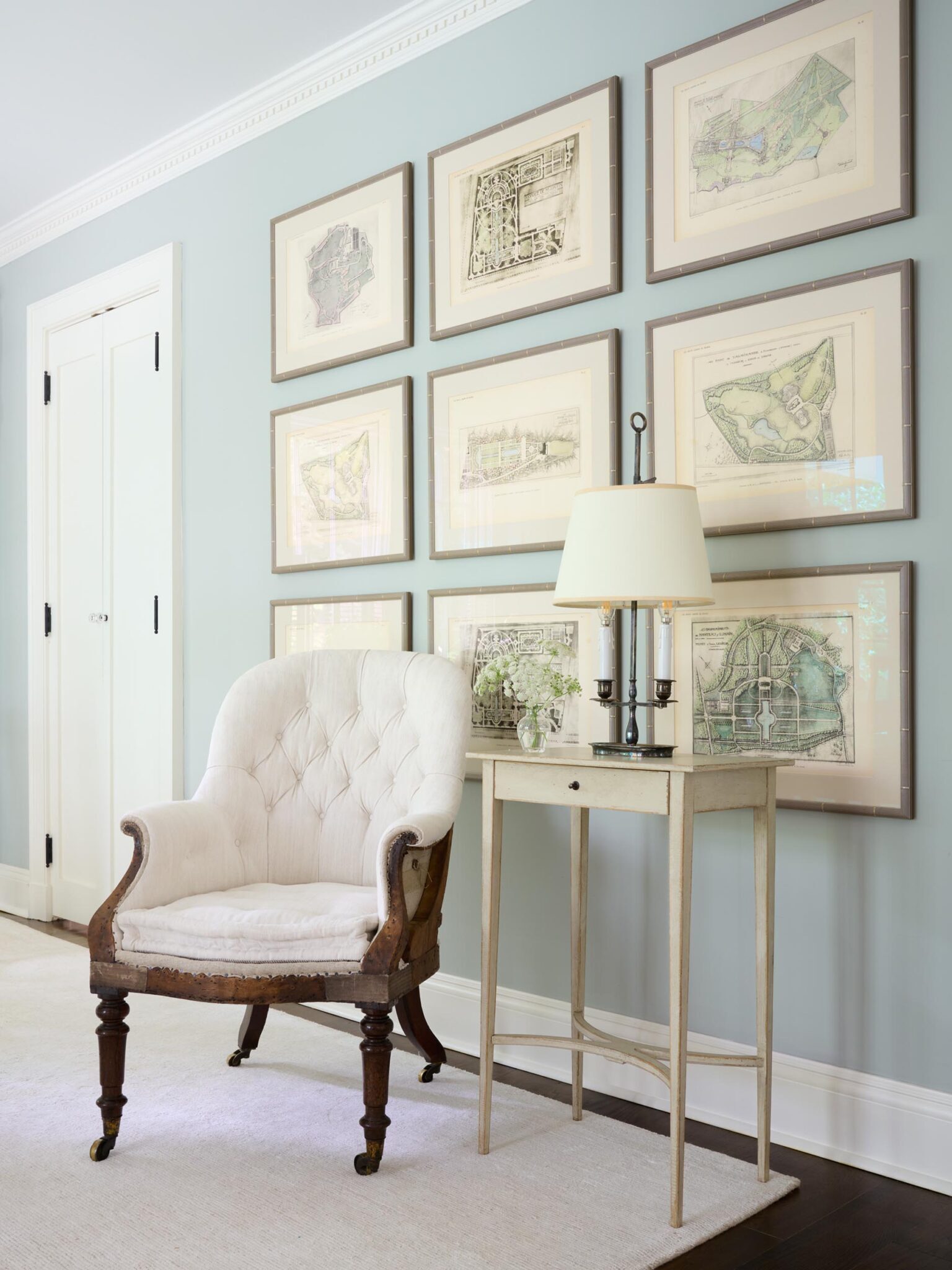
Original watercolors by Barbara Bellin hang with plates from Hector Sauveur’s book, Les Beaux Jardins, in the dining room. The plates were purchased during the Spring Furniture and Garden Show at the New York Botanical Garden. The vignette is replete with an antique linen reading chair from Howe London and a Chelsea Textiles Gustavian–style table topped with a 19th-century French silver plate lamp.
William Waldron -
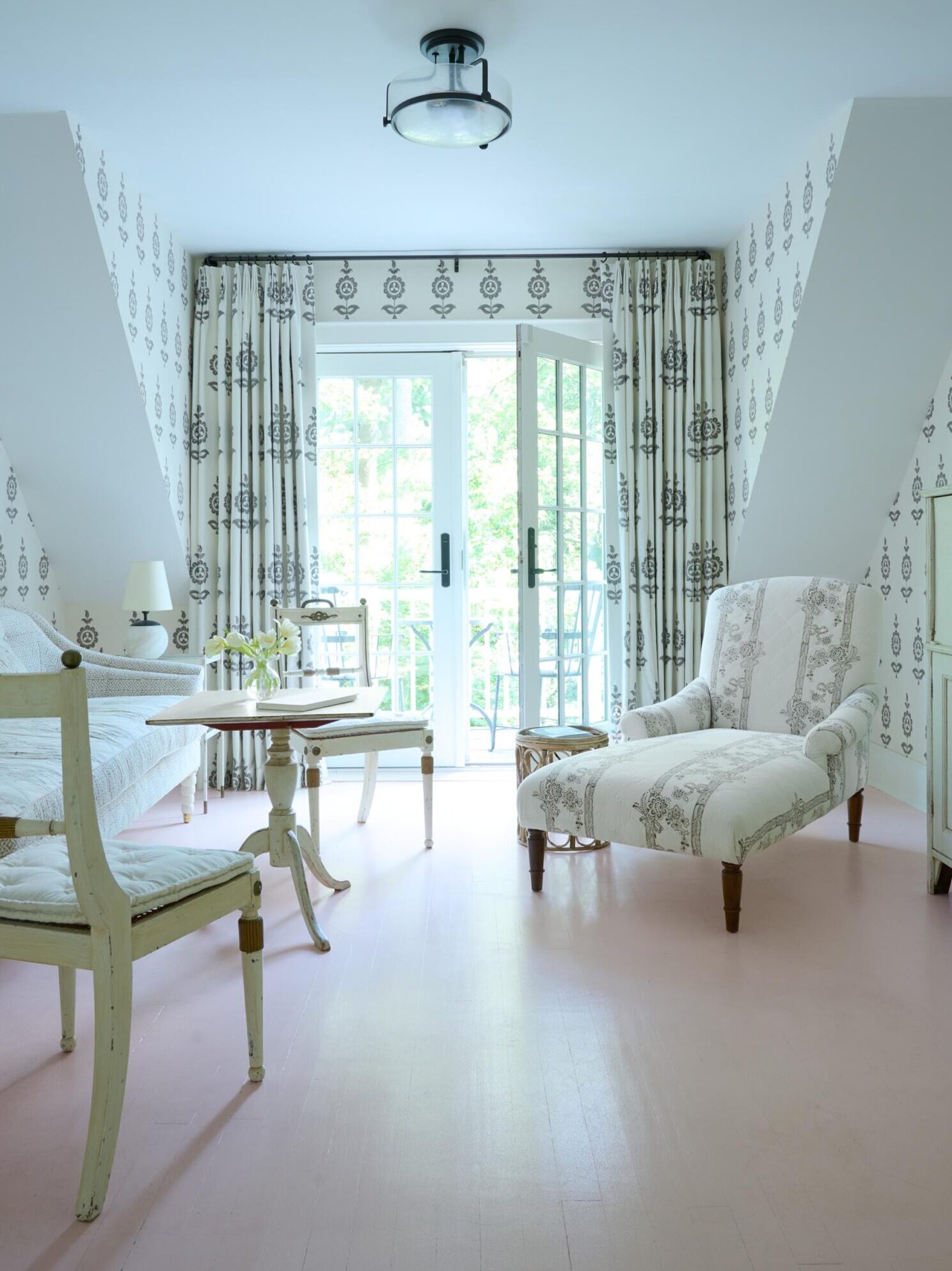
Peters calls the attic sitting room a “private oasis” where she can start her day quietly with a cup of a coffee. The walls are covered in Les Indiennes’ Daisy paper-backed fabric with curtains in the same print. The sofa and chaise are upholstered from quilts sewn from Les Indiennes’ French Stripe Mariette. The late 19th-century tilt-top table is from Cupboards and Roses in Sheffield, Massachusetts.
William Waldron
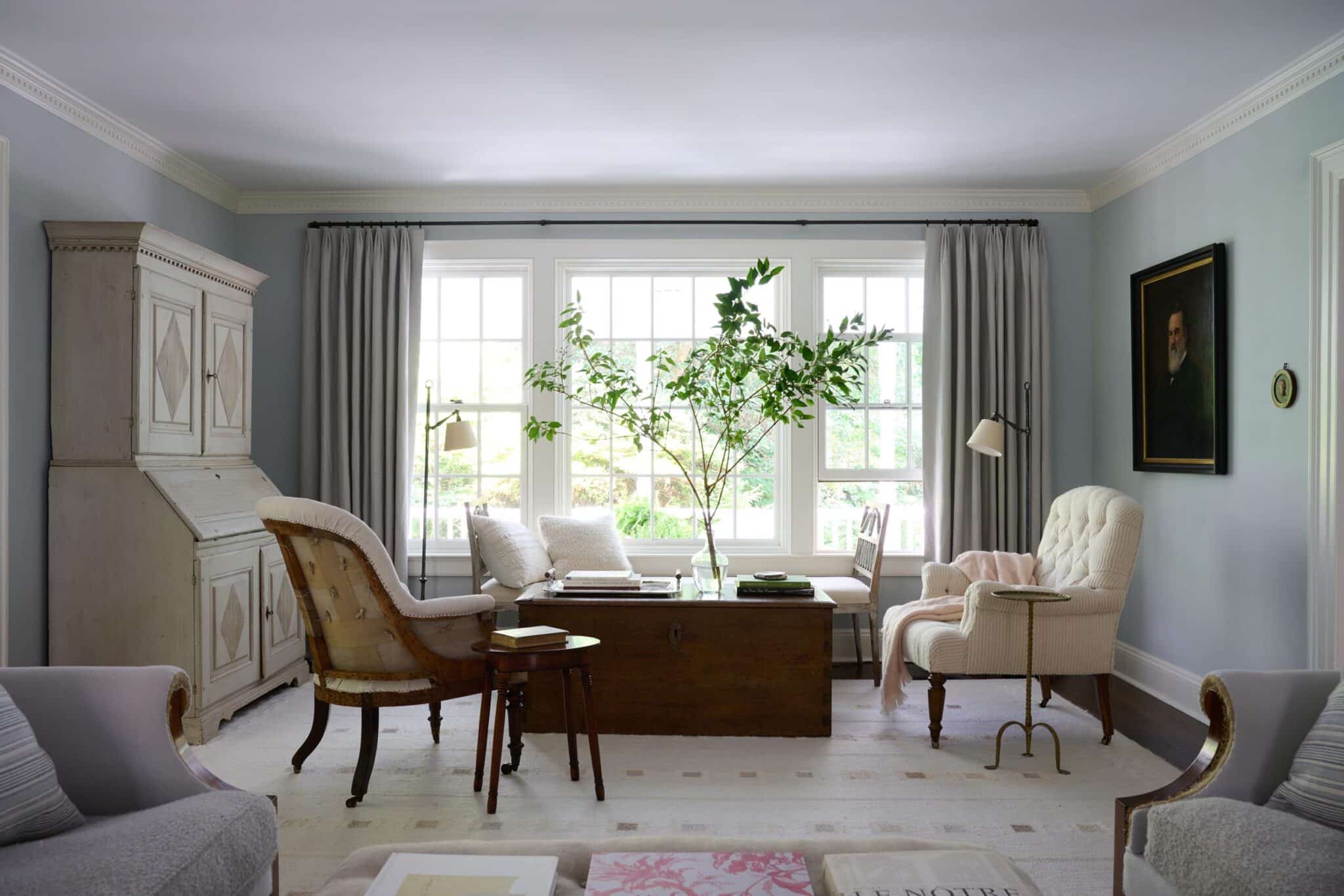
An expansive picture window balances the grand scale of the antique Gustavian secretary given to Peters by her husband for a milestone birthday. “Its tiny drawers are filled with our niece’s trinkets,” she says. “In our family, it is tradition for the younger members to choose the pieces they hope to inherit, and she has already claimed this one as her own.”
William Waldron“Beauty is more than creating—it’s cultivating—and that takes time,” she says. “Whether I am designing for myself or for a client, I draw from the people, places, and stories that have been ‘collected’ during a life well-lived. From there, I let a room evolve and, most often, it begins with something sentimental as opposed to something new, however valuable or exquisite it may be.”
If anyone knows a thing or two about precious acquisitions, it’s Peters. Prior to foraying into interior design, she enjoyed an established career in the art world spearheading development initiatives for notable museums including The Huntington Library and the Santa Barbara Botanic Garden. In fact, it was during a garden tour that she met her mentor, Bunny Williams, who entrusted her with part-time work while studying at Parsons. Upon graduating, Peters assumed a full-time post that she held for five years prior to joining Timothy Whealon’s firm as a senior designer.
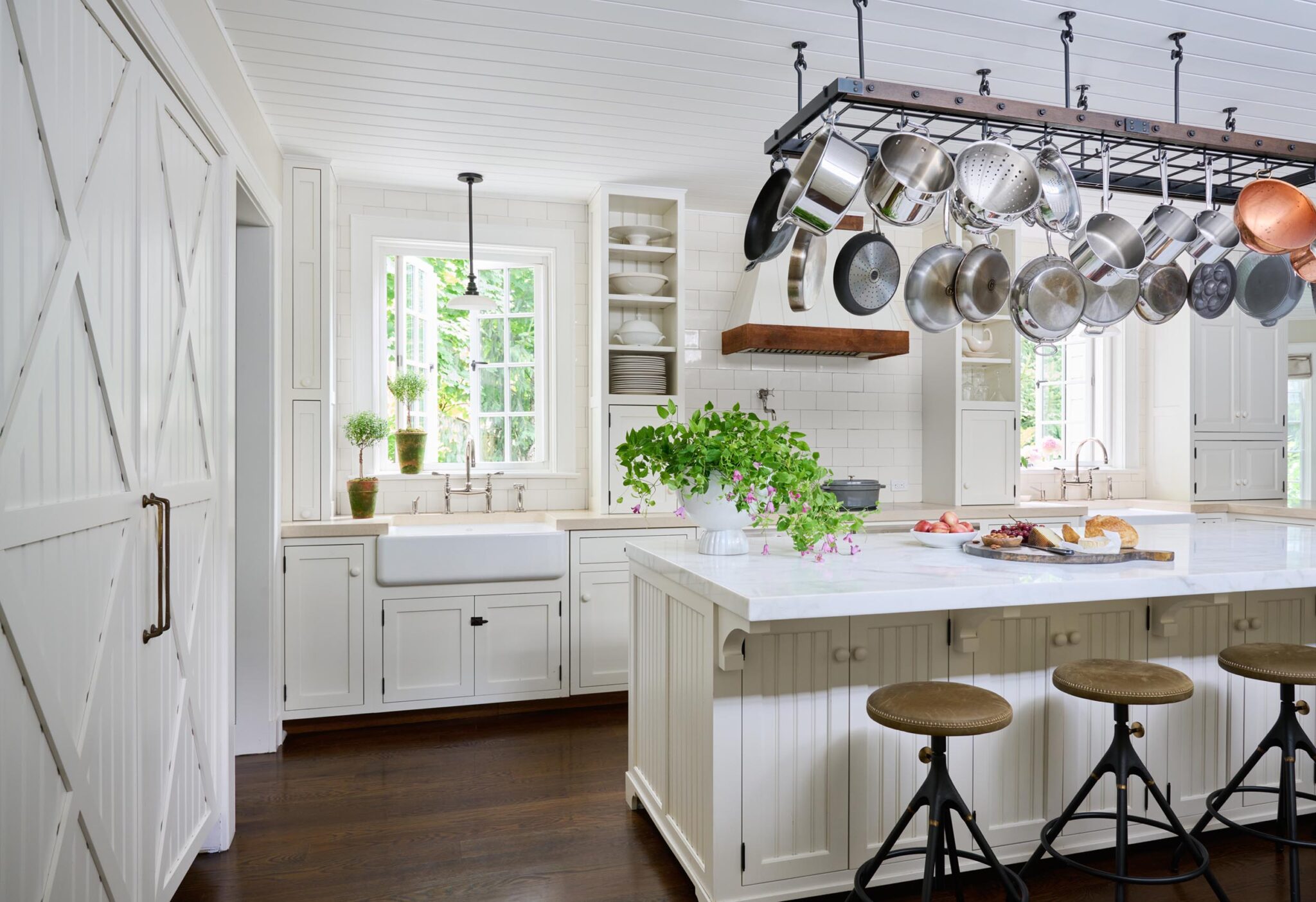
Custom stable-inspired refrigerator panels, Kohler farmhouse sinks, and Elizabeth Dow industrial counter stools evoke an Early American barn quality and nod to the couple’s shared passion for horses. A rustic beam wraps the custom range hood and connects it to the stained white oak floors. Two Waterworks Gansevoort pot racks were welded together and reframed to comprised one oversized fixture.
William Waldron-
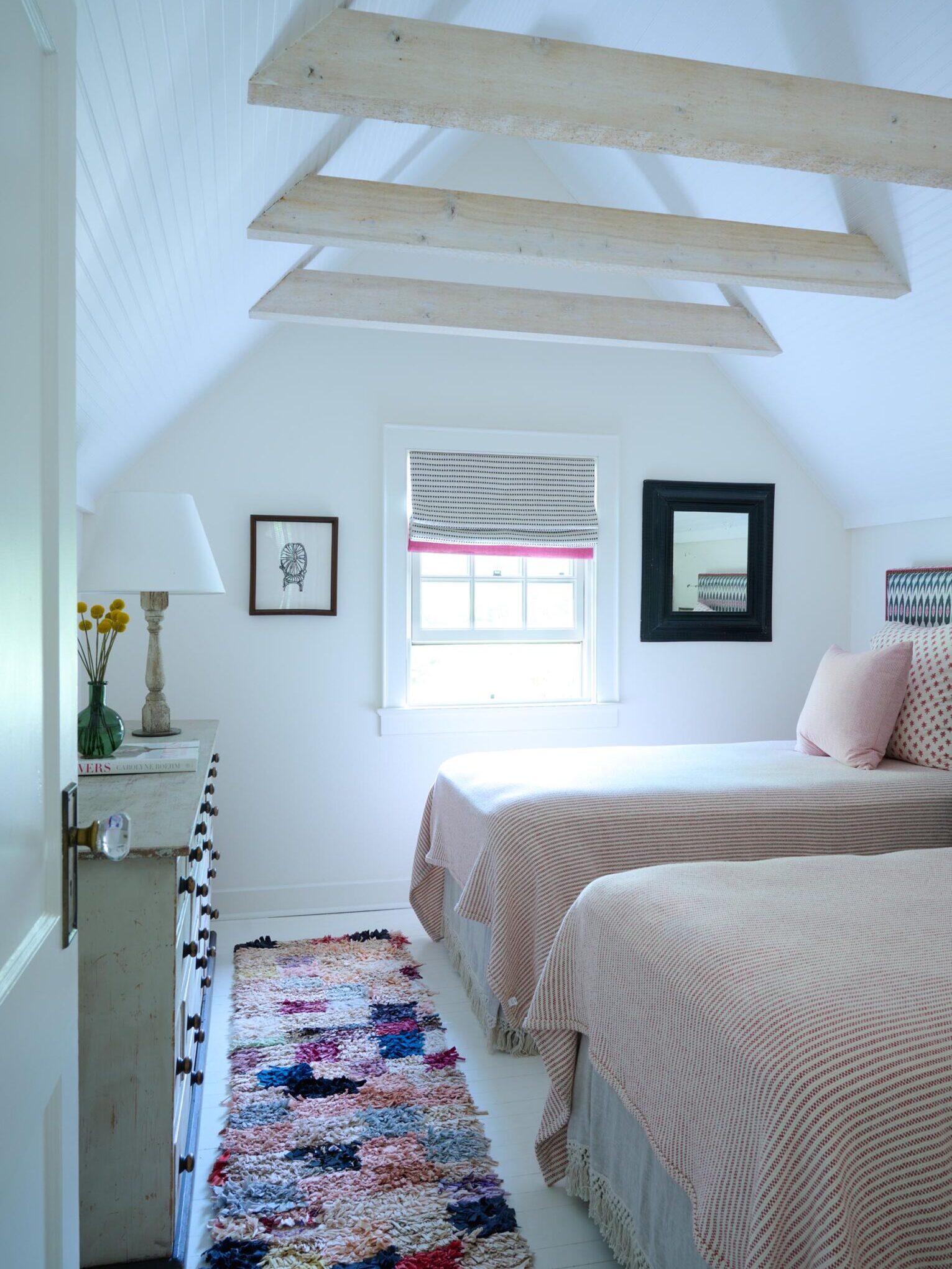
“Children have free run of the house, but they always end up here,” says Peters, who added beadboard and whitewashed beams to the attic bedroom’s ceiling for airiness and whimsy. A roman shade in C&C Milano’s Freccia fabric adds a kick of color along with the vintage Moroccan rag runner from Rug & Kilim.
William Waldron -
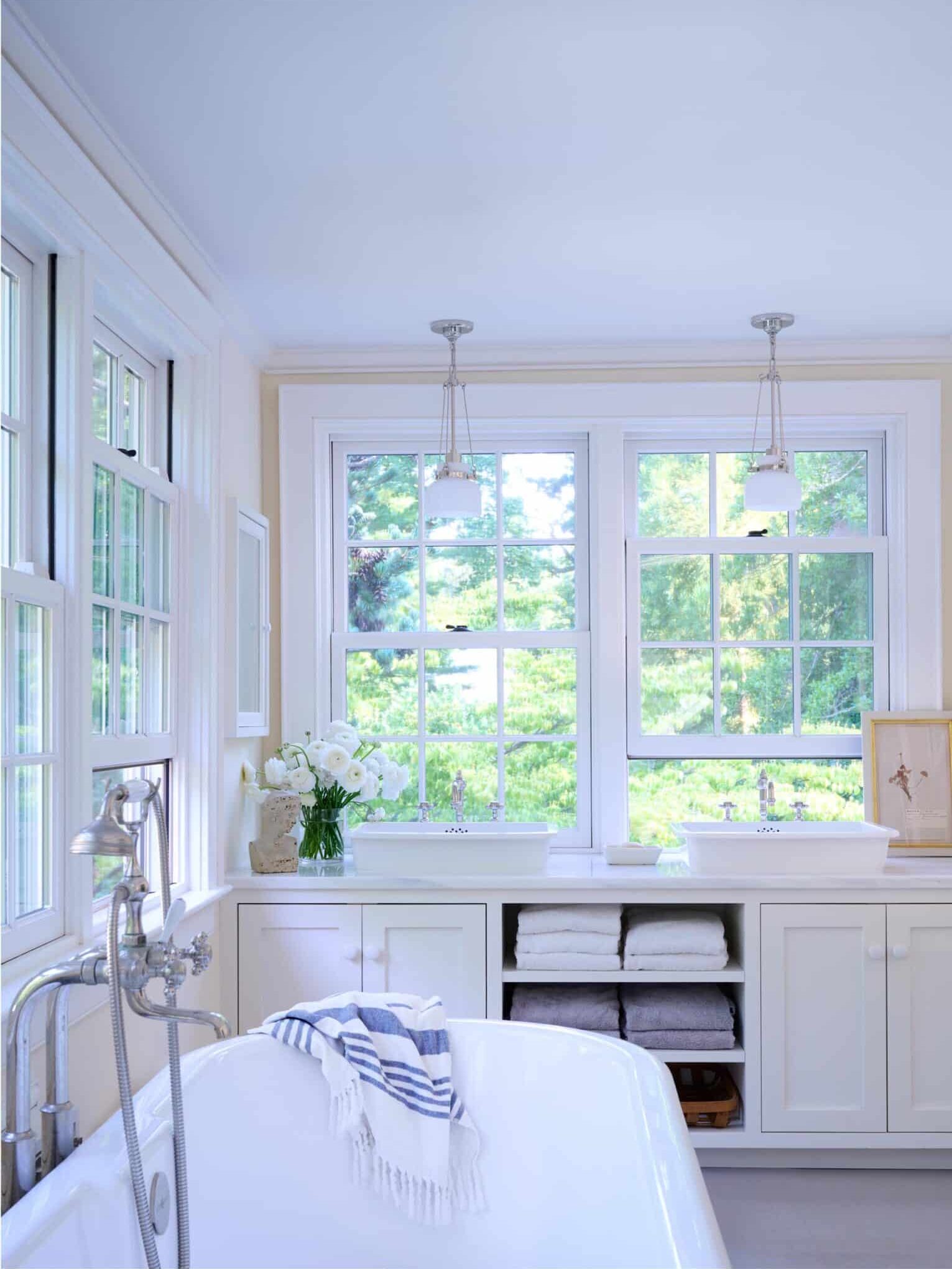
Formerly a sitting room, the primary bath was carefully configured within the framework of the existing windows. The double vanity is designed to nestle beneath the windowsill with a custom mirror that swings out from the wall and retracts flush against it when not in use. The curvy slipper tub softens the clean-lined Waterworks sinks, faucets, and fittings.
William Waldron
“One of many things I took away from my time with Bunny and Timothy is the idea that an elegant home is important, but an inviting home everything,” she says. “I wanted our farmhouse to be a quiet but happy haven for Paul and me and for our large extended families whose visits bring us so much joy. Nothing here is too fussy or feminine. I am happiest when I see my stepson, Adam, or nephew, Max, stretched out on the sofa with a drink in hand—so long as there is a coaster nearby. That is our only house rule.”

Painstaking measures were taken to ensure that the newly constructed cottage folded into the existing landscape planted by the original owners, a husband-and-wife team of botanical professors. Peters added the pear espaliers upon returning home from a trip to Paris where she stumbled upon a private courtyard bursting with espaliered fruit. For the driveway, individual pavers are planted through with grass to resemble Furlow Gatewood’s country lane in Georgia.
William Waldron-
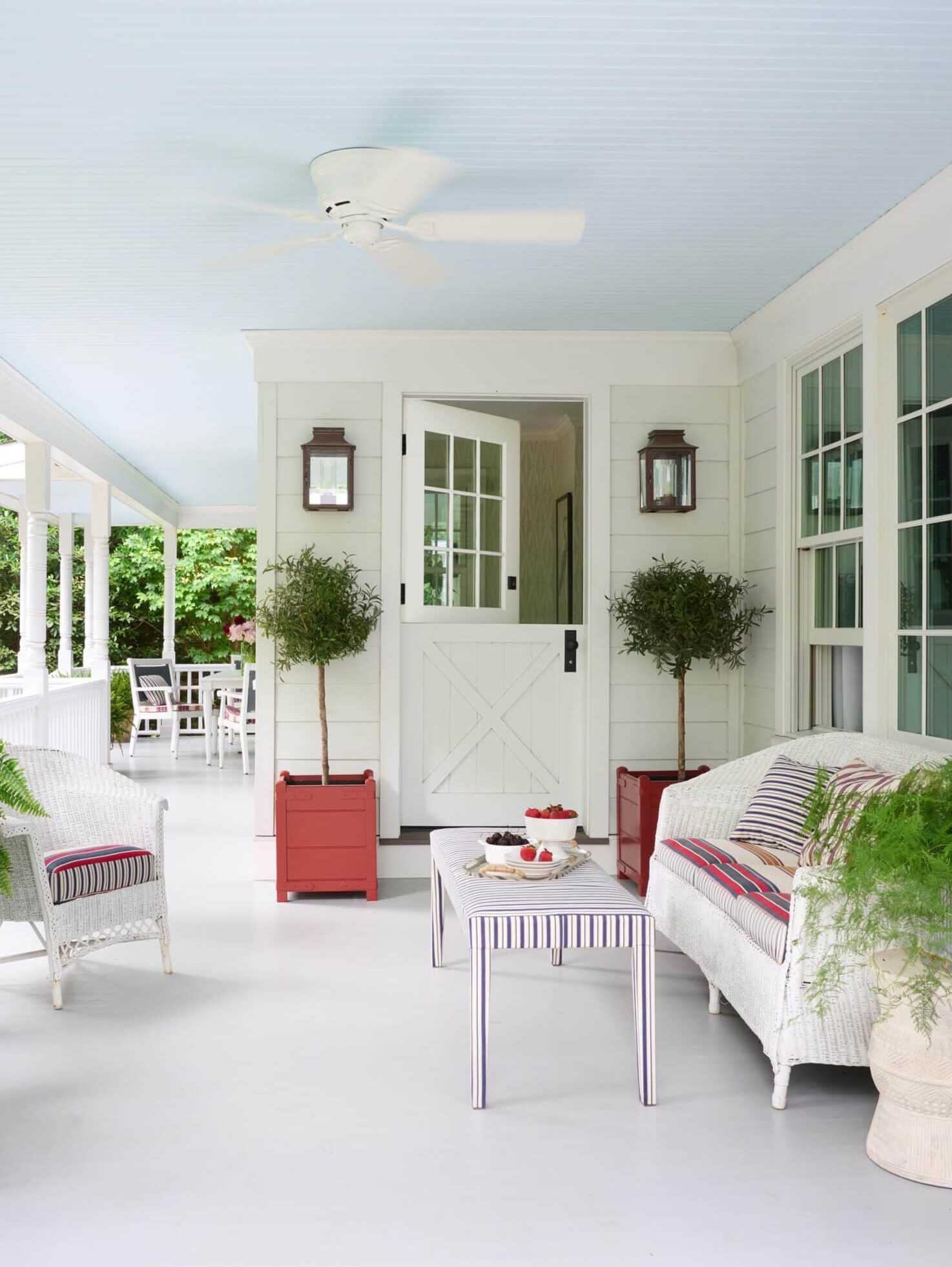
Classic copper lanterns and fruit tree topiaries flank the custom “stable-inspired” Dutch door to impart an All-American welcome. An upholstered bench from Howe London works double-duty as a coffee table or as seating when needed.
William Waldron -
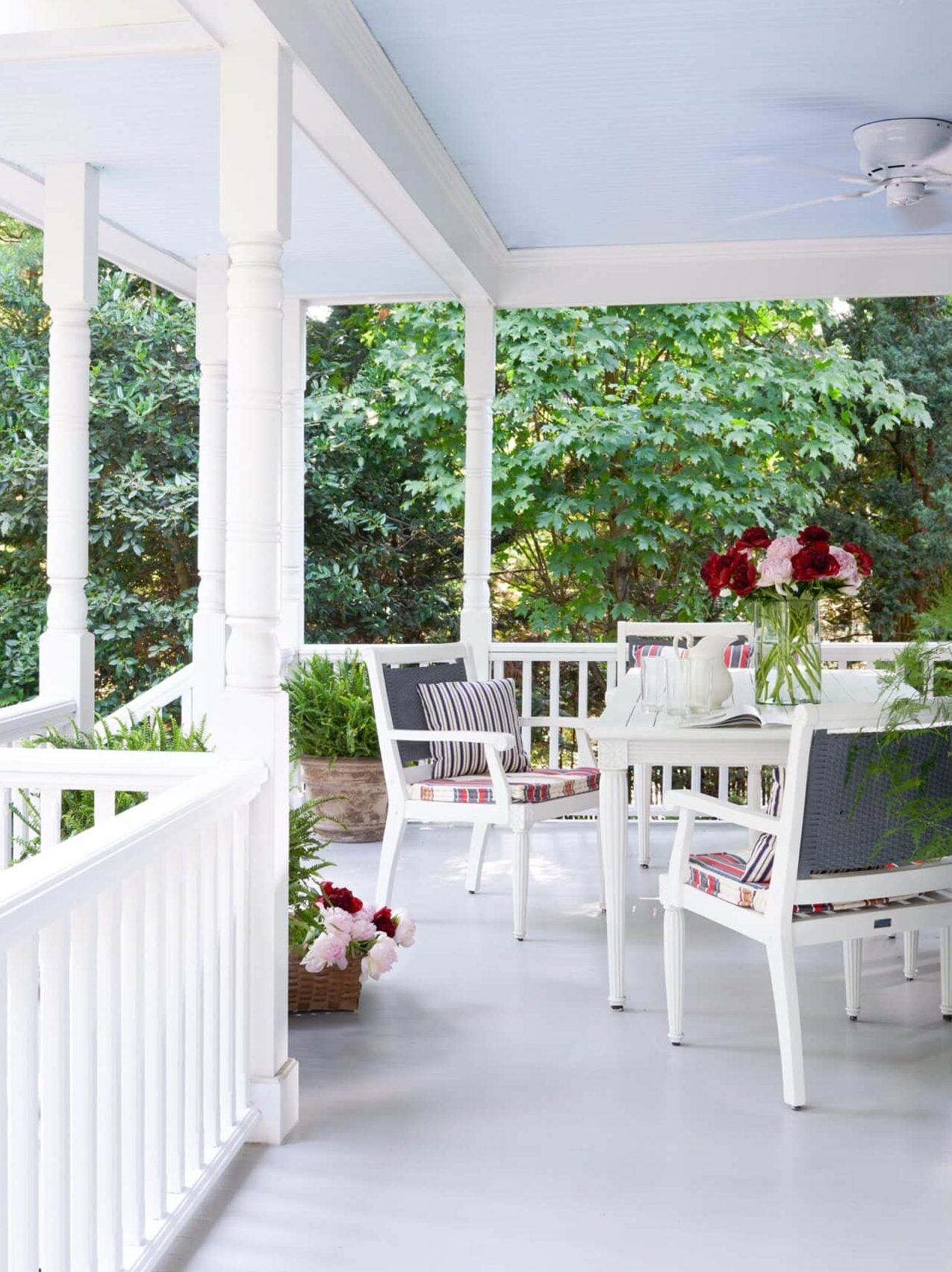
The deep end of the wraparound porch is designed for al fresco dining and entertaining. The table and chairs are topped with custom squab cushions from 36 Bourne Street in London. Each one is hand-sewn with covered buttons in a nod to old-world British craftsmanship.
William Waldron
